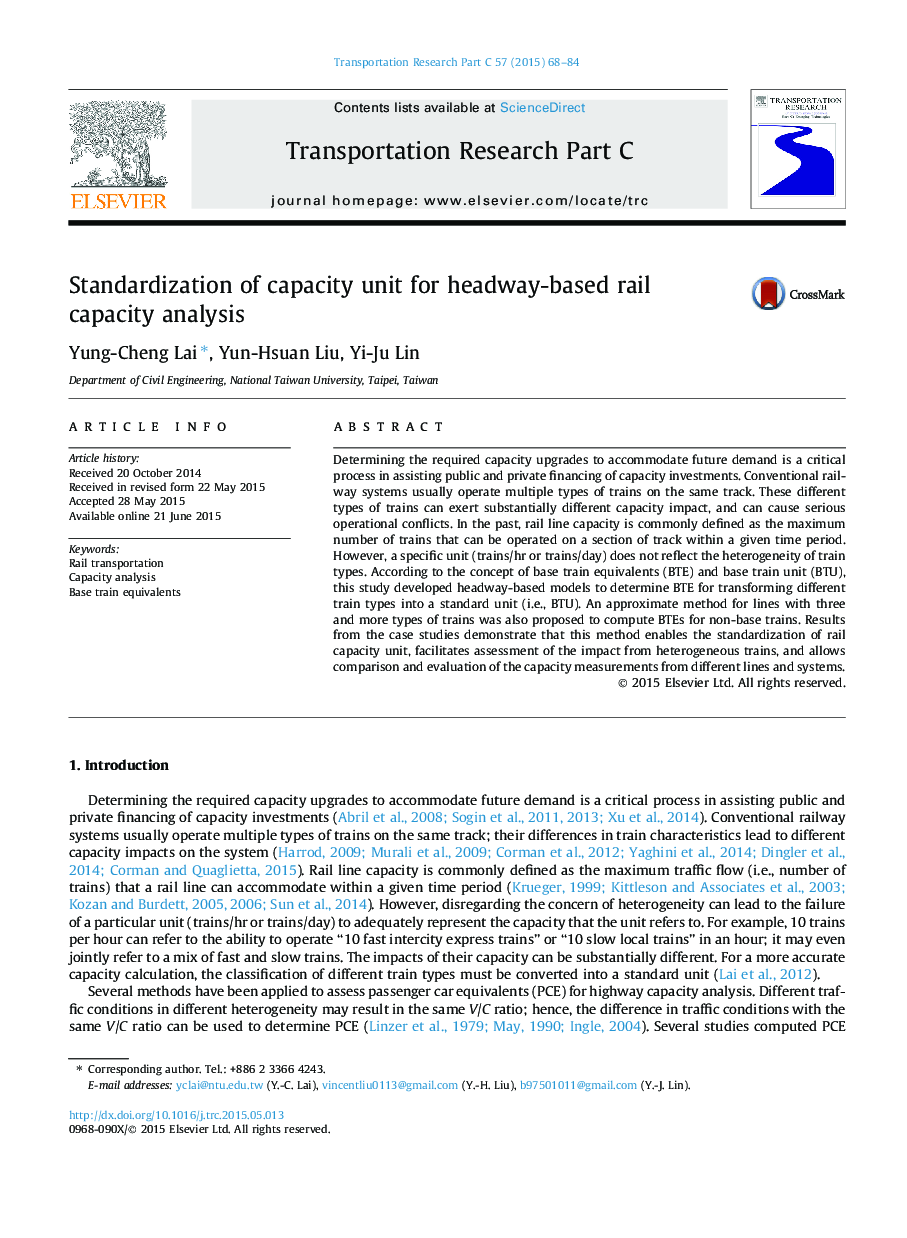| Article ID | Journal | Published Year | Pages | File Type |
|---|---|---|---|---|
| 526373 | Transportation Research Part C: Emerging Technologies | 2015 | 17 Pages |
•We propose headway-based base train equivalent (BTE) models to standardize capacity unit.•A two-stage approximate method is proposed for scenarios with more than 2 train types.•Heterogeneous trains can be converted into a standard unit – base train unit (BTU).•A process is developed to evaluate the reasonableness of BTE values using V/C ratio.•BTE and BTU enable effective capacity comparison among different lines and systems.
Determining the required capacity upgrades to accommodate future demand is a critical process in assisting public and private financing of capacity investments. Conventional railway systems usually operate multiple types of trains on the same track. These different types of trains can exert substantially different capacity impact, and can cause serious operational conflicts. In the past, rail line capacity is commonly defined as the maximum number of trains that can be operated on a section of track within a given time period. However, a specific unit (trains/hr or trains/day) does not reflect the heterogeneity of train types. According to the concept of base train equivalents (BTE) and base train unit (BTU), this study developed headway-based models to determine BTE for transforming different train types into a standard unit (i.e., BTU). An approximate method for lines with three and more types of trains was also proposed to compute BTEs for non-base trains. Results from the case studies demonstrate that this method enables the standardization of rail capacity unit, facilitates assessment of the impact from heterogeneous trains, and allows comparison and evaluation of the capacity measurements from different lines and systems.
